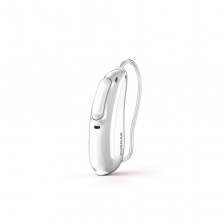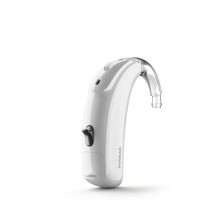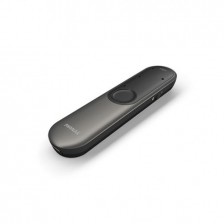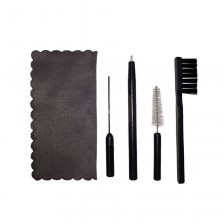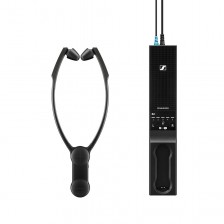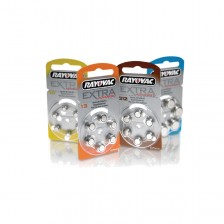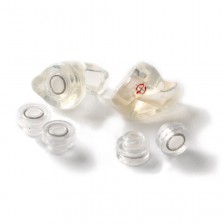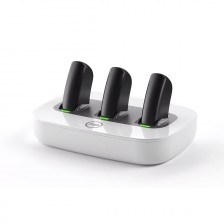What is Ménière's syndrome?


Ménière's syndrome or disease is a disorder of the inner ear. It is considered a chronic disease of unknown cause. Symptoms can be improved if treated.
Common symptoms include:
- Dizziness
- Loss of balance
- Vertigo
- Hearing loss
- Sensation of plugged ear
- Tinnitus (whistling)
How is Ménière syndrome diagnosed?
The first tests should include a blood test, x-rays, and MRI, as this will also rule out other disorders whose symptoms may resemble Ménière's disease.
After the appearance of one or more of the symptoms, these tests are carried out and other conditions are ruled out, two types of evaluations are carried out.
Hearing Screening
An audiometry is performed to evaluate if the affected person detects sounds in different volume and frequency in an adequate way. In Ménière's disease it is common to have difficulty hearing low frequencies or combinations of high and low frequencies.
Evaluation of balance
As we have seen, one of the main symptoms of Menière's syndrome is episodes of vertigo. To evaluate them, the following tests are performed to evaluate the function of the inner ear.
Videonystagmography
By evaluating eye movement, the function of balance is evaluated. The relationship between the eyes and balance is that sensors related to balance are connected to the muscles that control eye movement.
Swivel chair test
This test also measures the function of the inner ear according to eye movement. It consists of sitting on a rotating chair to stimulate the inner ear for evaluation.
Evoked myogenic vestibular potentials test
This test shows the characteristic changes in the ears due to the disease in affected people.
Posturography
This test consists of placing a safety harness and maintaining the balance in different conditions. It reveals which parts of the balance system (vision, inner ear function, or sensations of the skin, muscles, tendons, and joints) may be most affected.
Cephalic impulse test with video
This test uses video to measure eye reactions to sudden movements. The patient concentrates his sight on one point and his head is turned abruptly and unpredictably. If he removes his eyes from the target, he has abnormal reflexes.
Electrocochleography
This test allows you to observe the response of the inner ear to sounds. It may help determine if there is an abnormal buildup of fluid in the inner ear, but it is not specific for Ménière's disease.
How is Ménière syndrome treated?
While there is no cure for the disease, there are treatments that can improve symptoms. Scientists estimate that 6 out of 10 people improve on their own or can control their vertigo with diet, medications, or devices.
Most common medication
Depending on the symptomatology, one medication or another will be prescribed.
- Diuretic medications, to reduce fluid retention
Your doctor may prescribe medications to take during an episode of vertigo to lessen the severity of an attack:
- Medications for motion sickness, such as meclizine or diazepam (Valium), may reduce the spinning sensation and help control nausea and vomiting.
- Anti-nausea medications, such as promethazine, may control nausea and vomiting during an episode of vertigo.
Long-term drug use
Your doctor may prescribe a medication to reduce fluid retention (diuretics) and suggest that you limit your salt intake. For some people, this combination helps control the severity and frequency of symptoms of Ménière's disease.
Noninvasive therapies and procedures
Some people with Ménière's disease may benefit from other noninvasive therapies and procedures, such as the following:
- Rehabilitation. If you have balance problems between episodes of vertigo, vestibular rehabilitation therapy may improve your balance.
- Hearing aid. A hearing aid for the ear affected by Ménière's disease may improve your hearing. Your doctor may refer you to an audiologist to discuss which hearing aid options would be best for you.
- Positive pressure therapy. For vertigo that is difficult to treat, this therapy involves applying pressure to the middle ear to decrease fluid buildup. A device called a Meniett pulse generator applies pressure pulses to the ear canal through a ventilation tube. Treatment is done at home, usually three times a day for five minutes at a time.Positive pressure therapy has shown an improvement in the symptoms of vertigo, tinnitus and auditory pressure in some studies, but not in others. Long-term effectiveness has not yet been determined.
If the conservative treatments mentioned above are not successful, your doctor may recommend some more aggressive treatments.
Middle ear injections
Medications injected into the middle ear and then absorbed into the inner ear may improve symptoms of vertigo. This treatment is done in the doctor's office. Available injections include the following:
- Gentamicin, an antibiotic toxic to the inner ear, reduces the balance function of the ear and the other ear assumes responsibility for balance. However, there is a risk of greater hearing loss.
- Steroids, such as dexamethasone, may also help control vertigo attacks in some people. Although dexamethasone may be slightly less effective than gentamicin, it is less likely to cause additional hearing loss.
Surgery: the last option
When the symptoms are really severe and disabling for the patient, the option of surgery is considered.
- Some are done in the endolymphatic sac (which regulates fluid levels in the inner ear) by draining it to decompress it.
- Labyrinthectomy The balance portion of the inner ear is removed, eliminating both the balance and auditory function of the affected ear. This is usually done in cases where the hearing loss is total or almost total in the affected ear.
- Another possible surgery is to cut the vestibular nerve, which connects the balance and motion sensors in the inner ear with the brain, although this is done less frequently.


